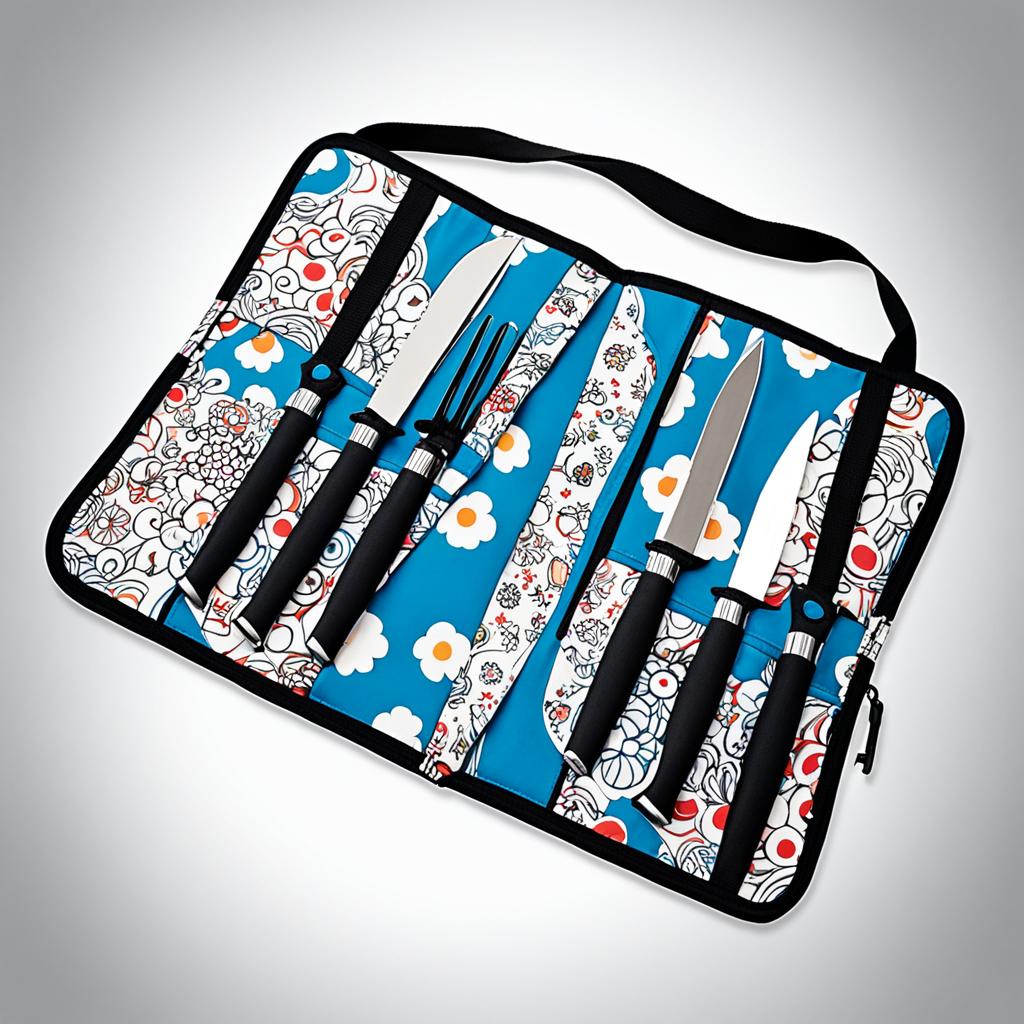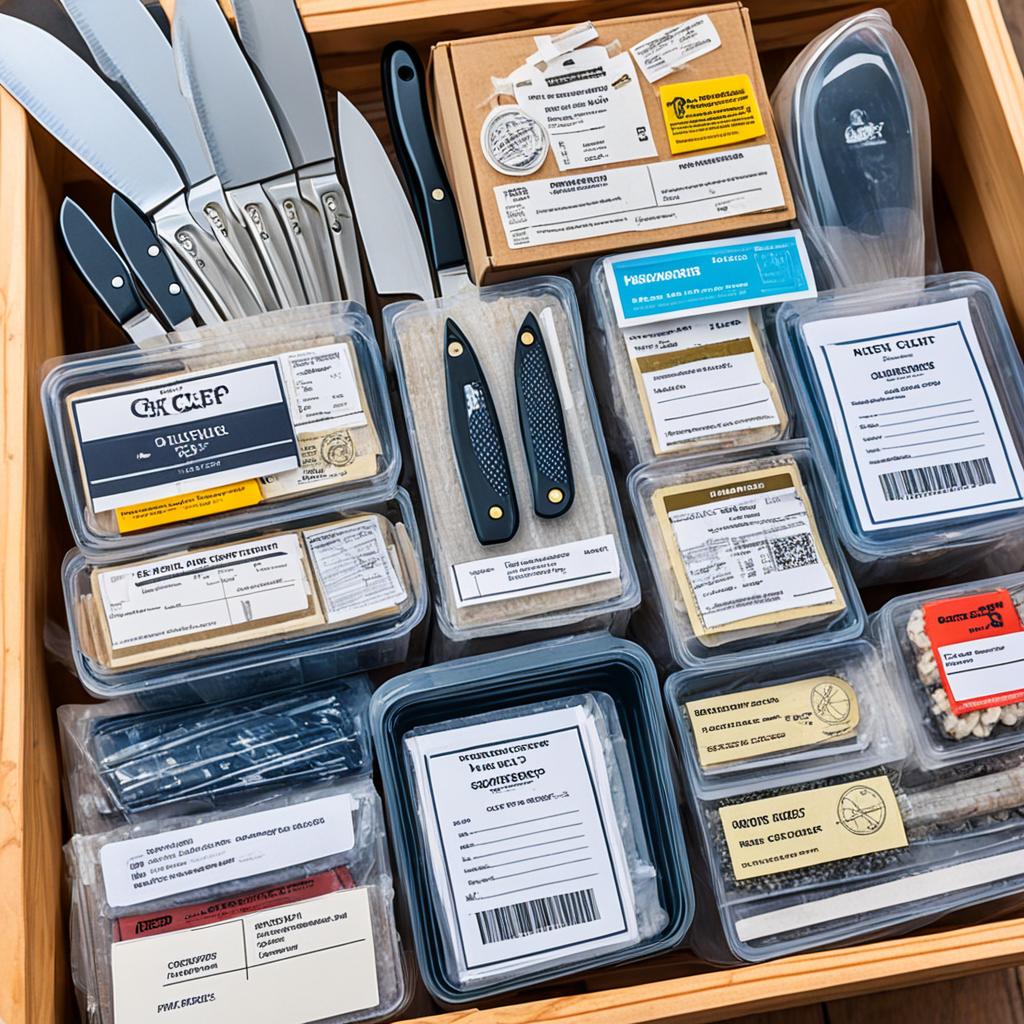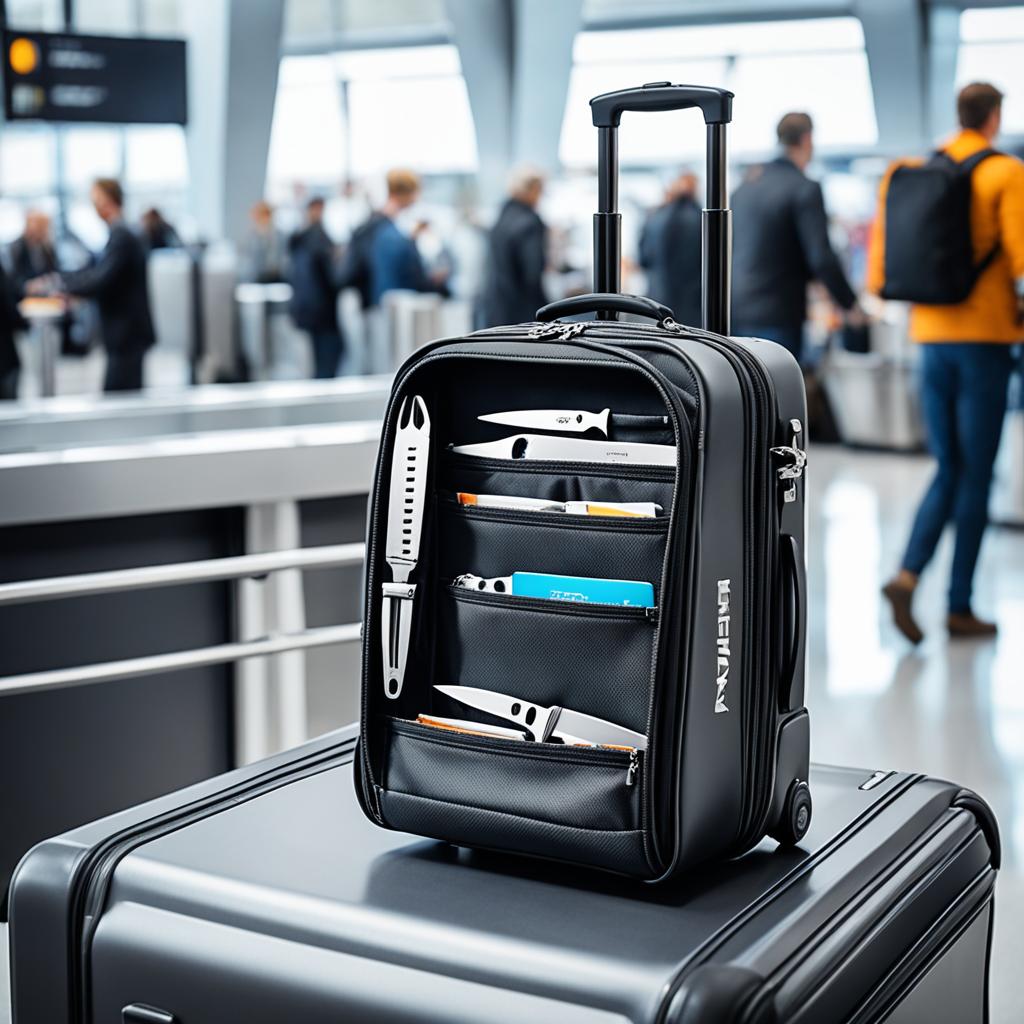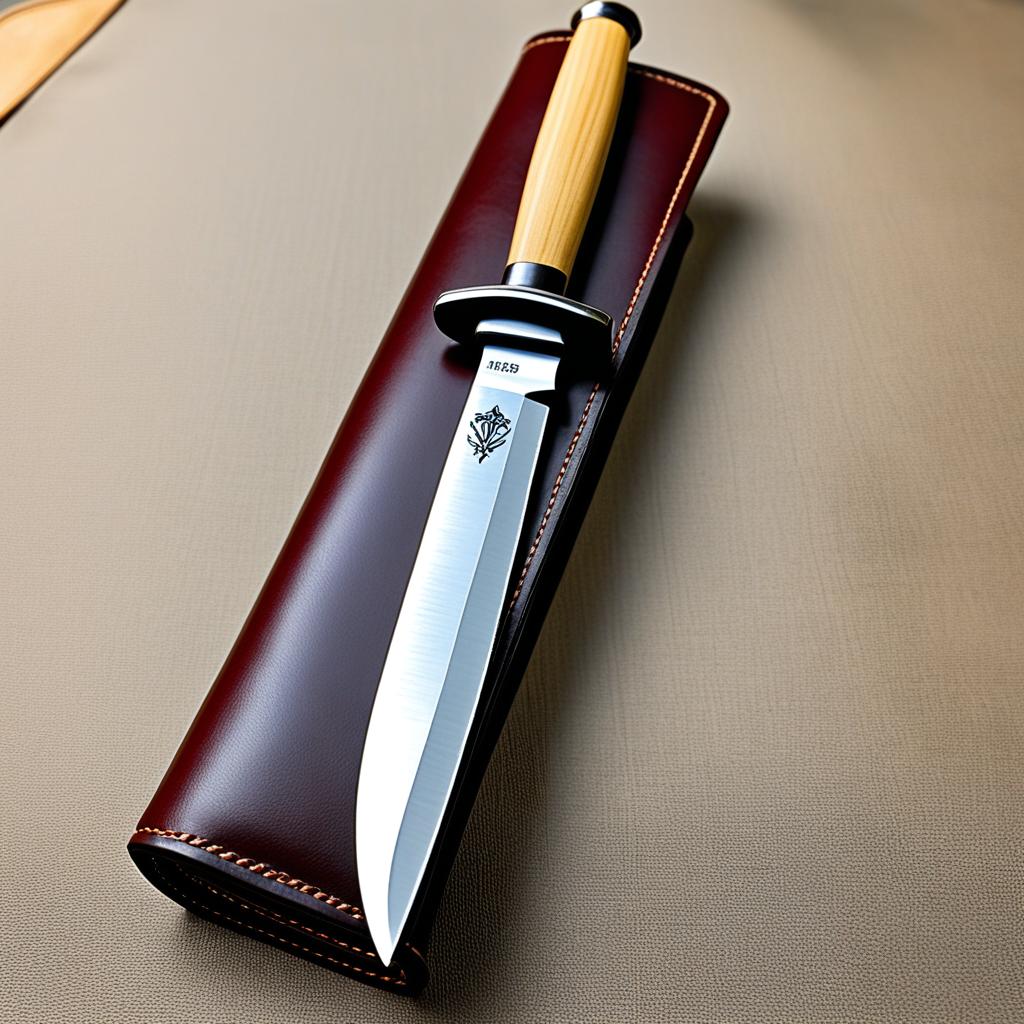When it comes to packing for a trip, most people prioritize essentials like clothes, toiletries, and electronics. But what about chefs and their knives? Do they bring their precious culinary tools with them when they travel? If you’ve ever wondered about the logistics and practicality of traveling with kitchen knives, you’re not alone.
Chefs value their knives as essential companions in the kitchen. These precision tools are carefully selected and honed to perfection, and using them can make a significant difference in the quality of a dish. So, it’s natural to wonder if chefs go to the extent of bringing their knives along when they travel. Are they willing to risk potential damage or loss, or do they rely on finding suitable replacements at their destination?
In this article, we explore the truth behind chefs traveling with their knives. We’ll uncover the regulations surrounding knife transportation, the various methods for securely packing knives, and the considerations you should keep in mind. So, whether you’re a chef looking for peace of mind or simply curious about this unique aspect of travel, read on to satisfy your curiosity.
Packing Methods for Traveling with Kitchen Knives

When it comes to packing kitchen knives for travel, there are several methods you can utilize based on your personal preferences and the number of knives you need to pack. These methods ensure the safety of your knives during transportation and allow for easy storage and organization. Let’s explore some popular packing options.
- Knife Roll Bag: A knife roll bag is a versatile and practical choice for traveling with kitchen knives. These bags feature multiple compartments and pockets designed to hold knives securely. They are typically made from durable materials like leather or canvas and equipped with closures such as plastic clips or buckles. The knife roll bag allows you to keep your knives organized and protected throughout your journey.
- Knife Edge Guard: If you prefer individual protection for each knife, a knife edge guard is an excellent choice. These guards cover the cutting edge of the knife, safeguarding it from accidental bumps and scratches. They are usually made of plastic or nylon and come in various sizes to accommodate different knife styles. Knife edge guards are lightweight and can easily be slipped on and off the blade.
- Chef’s Knife Sheath: Some chef’s knives come with their own sheaths or cases specifically designed to protect the blade. These sheaths provide an extra layer of safety during travel and prevent the knife from being exposed to other items in your luggage. If your chef’s knife includes a sheath, make sure to utilize it for added protection.
- Wrapping and Bundling: Another packing method involves individually wrapping the knives using a dishtowel, heavy-duty packing paper, or even bubble wrap. This technique allows you to create a secure bundle of knives while providing cushioning for each blade. Be sure to wrap each knife carefully, leaving enough space between them to prevent any potential damage. Secure the bundle with rubber bands or packing tape to keep everything in place.
Remember, the packing method you choose depends on factors such as the number of knives you will be traveling with, how frequently you travel, and the other items packed alongside your knives. Select the method that best suits your needs to ensure your knives arrive safely and ready for your culinary adventures.
Now that you’re familiar with the different packing methods, let’s move on to the considerations you should keep in mind when packing your kitchen knives for travel.
Considerations for Packing Kitchen Knives
When it comes to packing your kitchen knives for travel, there are a few important considerations to keep in mind. These considerations include the number of knives you will be taking, the frequency of your travel, and the items that will be packed alongside your knives.
Number of knives: Think about how many knives you will need during your trip. If you’re traveling with multiple knives, it’s important to choose a packing method that can accommodate them all. One popular option is a knife roll bag, which has multiple compartments and pockets for easy organization and protection of your knives.
Frequency of travel: If you frequently travel and need to bring your knives with you on a regular basis, investing in a specialized knife roll bag or some form of knife edge guard, sheath, or case can be more convenient. These options provide added protection and make it easier to transport your knives safely.
Items packed with knives: Consider what other items will be packed alongside your knives. If you’re packing your knives in a suitcase with clothing, you can provide extra protection by placing them in between layers of clothing. However, if you’re packing them with hard or metal items, additional protection may be necessary to prevent any damage.
Pros and Cons of Different Packing Methods
| Packing Method | Pros | Cons |
|---|---|---|
| Knife Roll Bag | – Organized storage – Easy transportation – Protects knives from damage |
– Takes up space – May not fit all knives |
| Knife Edge Guard | – Individual protection for each knife – Lightweight and compact |
– Requires separate storage for multiple knives – Can be more expensive |
| Chef’s Knife Sheath | – Included protection with the knife – Convenient for single knife transport |
– Limited to specific knife models – May not fit all knives |
| Wrap and Bundle Technique | – Cost-effective – Customizable to fit various knives |
– Time-consuming to wrap and unwrap – Risk of potential damage if not done properly |
By considering these factors, you can make an informed decision on the best packing method for your kitchen knives. Remember to prioritize the safety and security of your knives while ensuring convenience and ease of transportation.
Shipping Options for Expensive Kitchen Knives

If you have concerns about putting your expensive kitchen knives in checked luggage, there are alternative options for shipping them. Postal or shipping services such as USPS, FedEx, or UPS can be used to send your knives to your destination or ahead of time. Many hotels and resorts offer package holding services, but it is important to check with them before sending your knives. When shipping knives, it is advisable to follow the same packaging tips as if you were putting them in checked luggage. This includes properly wrapping and securing the knives to prevent any potential damage during transit.
| Shipping Service | Delivery Time | Cost |
|---|---|---|
| USPS | 1-3 business days | Varies based on weight and distance |
| FedEx | 1-5 business days | Varies based on weight and distance |
| UPS | 1-7 business days | Varies based on weight and distance |
When shipping your kitchen knives, it is crucial to choose a reputable shipping service that provides tracking and insurance options. This will ensure that your knives are protected and you have peace of mind during transit. Additionally, it is advisable to declare the contents of the package as “kitchen utensils” to avoid any potential issues during the shipping process. Properly packaging your knives is essential to prevent damage. Use bubble wrap, foam, or other protective materials to cushion the knives and prevent them from moving around. Place the wrapped knives in a sturdy box and secure it with tape to ensure it stays intact during shipping.
Traveling with Knives in Carry-On Luggage

When it comes to carry-on luggage, it’s important to be aware of the Transport Security Administration (TSA) regulations surrounding knives to ensure a smooth airport experience. In general, the TSA only allows plastic or round bladder butter knives in carry-on bags. This restriction is in place to prioritize passenger safety and prevent potential harm.
To avoid any issues at the airport, it’s crucial to familiarize yourself with the prohibited items listed by the TSA. Adhering to these regulations can help you breeze through security checkpoints without delays or complications.
However, if you accidentally forget to remove a knife from your carry-on bag before reaching the airport checkpoint, you may encounter some delays. Generally, the TSA won’t enforce any penalties unless you are carrying a meat cleaver, which can result in a fine.
If you find yourself caught with a chef’s knife or any other prohibited knife at the checkpoint, there are several options available to you. Rather than surrendering the knife to the TSA, consider these alternatives:
- Put it in your checked bag: If you have a checked bag, you can transfer the knife to it to comply with rules and regulations.
- Give it to a friend or relative: If you have someone traveling with you who isn’t carrying a knife, you can ask them to hold onto it until you return.
- Take it back to your car: If you have your own vehicle parked nearby, you can return the knife to your car before proceeding through security.
- Use a mailer to ship it back home: If none of the above options are feasible, you can utilize a mailer to ship the knife back to your home address. Make sure to use a reputable postal or shipping service for safe and secure delivery.
It’s important to note that specific instructions for traveling with kitchen knives in checked luggage may vary depending on the airline. To ensure a hassle-free journey, reach out to your airline directly for their guidelines and recommendations.
Moreover, when flying internationally, it’s essential to research and comply with local laws regarding the transportation of knives. Some countries prohibit carrying any type of knife, so it’s crucial to be well-informed and avoid running into any legal issues.
Traveling with Kitchen Knives in the UK
When traveling in the United Kingdom (UK), it’s important to be aware of the regulations regarding carrying knives on a plane. In the UK, kitchen knives are not allowed in hand luggage and can only be taken aboard when securely packed in checked baggage.
The UK Government website provides useful information on the transportation of items via air and specifically states the restrictions on carrying kitchen knives. It is advisable to consult this information and ensure compliance with the regulations. Additionally, while the government provides a general list of prohibited items, it is recommended to check with the specific airline for any additional restrictions they may have.
In the event that a kitchen knife is confiscated at the airport, it’s worth noting that some items may be legal but restricted for air travel. In such cases, services like Post and Fly can be used to securely ship the confiscated items back to your address upon your return.
One concern when traveling with valuable kitchen knives is the risk of theft, particularly at baggage claim. Although airports have security measures in place, theft can still occur. To mitigate this risk, it may be wise to consider using a less expensive set of knives for travel, reducing the potential loss of valuable and sentimental items.
FAQ
Q: Do chefs travel with their knives?
A: Yes, chefs are allowed to bring their knives on a plane as long as they are securely packed in checked luggage. However, only plastic or round bladder butter knives are allowed in carry-on luggage.
Q: What are the different methods for packing kitchen knives for travel?
A: There are various methods for packing kitchen knives, including using a knife roll bag, knife edge guard, chef’s knife sheath, and wrapping and bundling techniques.
Q: What considerations should I keep in mind when packing kitchen knives for travel?
A: When packing kitchen knives for travel, think about the number of knives you will be taking, how often you travel with them, and what other items will be packed with your knives.
Q: Are there alternative options for shipping expensive kitchen knives?
A: Yes, you can consider shipping your expensive kitchen knives separately using reputable postal or shipping services, such as USPS, FedEx, or UPS.
Q: Can kitchen knives be carried in carry-on luggage?
A: In carry-on luggage, the TSA allows only plastic or round bladder butter knives. It is important to check the TSA regulations and prohibited items list before traveling.
Q: Are there any consequences if I am caught with a kitchen knife at the airport checkpoint?
A: If you accidentally forget to remove your knife before reaching the airport checkpoint, you may encounter delays but generally won’t face enforcement action unless you are carrying a meat cleaver. In such cases, a fine may be imposed. You have options to handle the situation, including placing the knife in your checked bag, giving it to a friend or relative, taking it back to your car, or using a mailer to ship it back home.
Q: What are the regulations for carrying kitchen knives on a plane in the UK?
A: In the UK, kitchen knives are not allowed in hand luggage and can only be taken aboard when securely packed in checked baggage. It is important to check with the specific airline for any additional restrictions and refer to the UK Government website for detailed information on transporting items via air.
Q: What should I do if my luggage is stolen and my kitchen knives are inside?
A: While airports have security measures in place, theft can still occur at baggage claim. To minimize the risk, it may be worth considering using a less expensive set of knives for travel to avoid losing valuable and sentimental kitchen knives.
